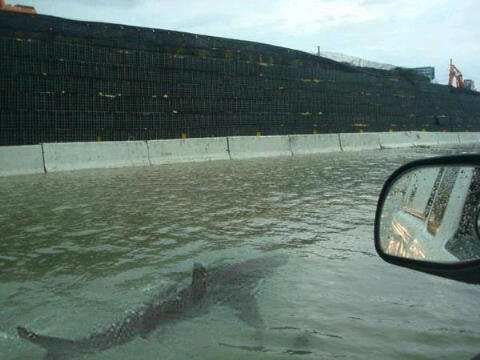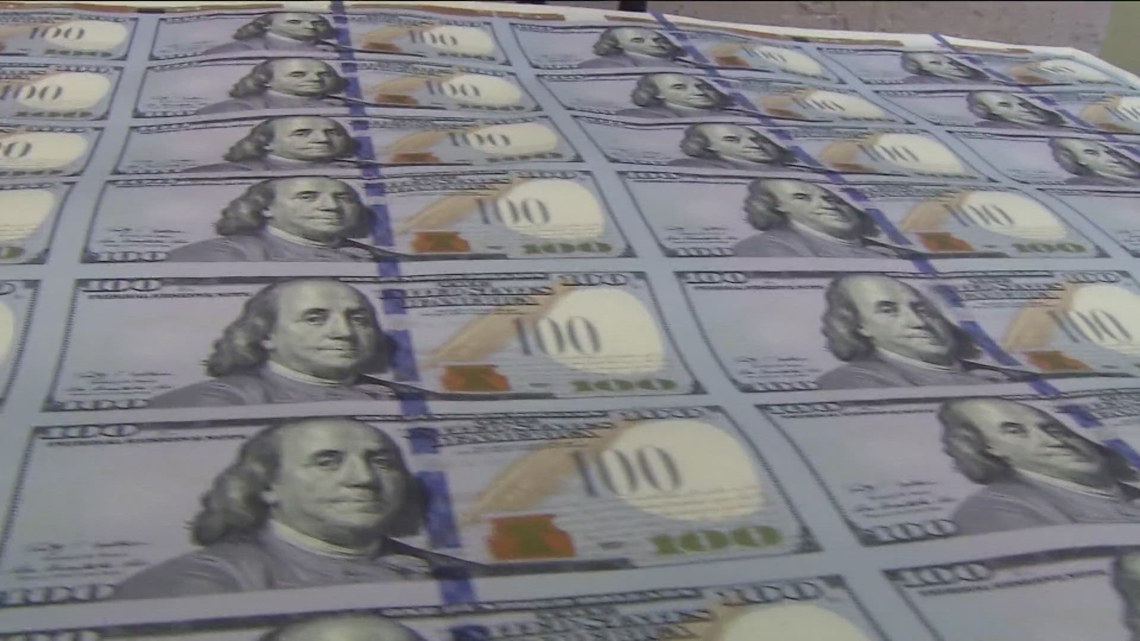CBS News
3 smart CD moves to make before the next rate cut

witthaya_prasongsin/Getty Images
After a four-year period in which interest rates hit record lows and then rose to decades-highs, the Federal Reserve started cutting interest rates again in September. A half a percentage point cut, sparked by cooling inflation numbers, was issued on September 18. And with unemployment and inflation declining in September, too, additional cuts of 25 basis points each look likely for the next two Fed meetings in November and December.
While this is welcome news for borrowers, it will detract from the big returns savers have been accustomed to in recent years. This is particularly true for those who have opened or are considering opening a certificate of deposit (CD). That said, CD interest rates haven’t declined so dramatically as to render these unique savings vehicles unworthy. Savers can still earn hundreds and potentially thousands of dollars with the right CD account – even now.
But there are some smart CD moves savers should make now, before the next rate cut, to earn that big return. Below, we’ll break down three of them.
Start by seeing how much more you could be earning on your money with a top CD here.
3 smart CD moves to make before the next rate cut
While CDs are still a safe and predictable way to earn a substantial return on your money, this high rate cycle could soon be coming to a close. Savers who have yet to take advantage, then, or those considering another account, should make the following moves now — before the Fed takes additional action:
Determine your budget
The more you deposit into a CD the more you’ll earn. That simple calculation, however, doesn’t account for any early withdrawal penalties you’ll need to pay if you withdraw your money prematurely. These penalties range from lender to lender but they can easily negate any earnings you’ve accumulated to that point. So, first, determine your budget. Figure out precisely how much you can afford to deposit and for how long you can lock it away. Once you have this amount and length of time (CD term), determined, you’ll be ready to take next steps.
Get started with a CD online now.
Shop around for lenders
Don’t just head to your local bank branch to open a CD. Often, the best CD rates and terms are found with online banks versus those with physical locations. But even all online lenders are not the same as some will require higher minimum deposits or other requirements to earn a high rate. So shop around for lenders to find one offering the best rates for the amount of money you’re comfortable depositing. And be sure to understand the early withdrawal penalties and any other fees or maintenance costs that could affect your returns before getting started.
Open a long-term CD
A long-term CD will mature anywhere between 18 months and 10 years. Once you’ve determined how much money you can comfortably afford to deposit, consider one of these accounts instead of a short-term one now. Currently, short-term CDs have slightly higher rates than long-term ones do. But those accounts will mature in just a few months, at which point rates will likely be lower. But long-term CDs have competitive rates now (in the 4% to 5% range), allowing savers to earn big returns for years to come, even if the larger rate climate cools during that time frame. And because of the locked rate nature of these accounts, you’ll be able to determine with precision your exact earnings upon account maturity.
The bottom line
Rate-cutting action on behalf of the Federal Reserve should spur savers who haven’t take advantage of the current high rate climate (or those who want to continue to) to make a move now – and they should do so with a CD. Specifically, savers should determine their budget in order to deposit as much as they can comfortably afford. But they should also shop for lenders to find one offering the highest rates, specifically for long-term CDs, which can help savers weather what appears to be a cooling rate climate.
Have more questions? Learn more about your current CD options here.
CBS News
Beware the “street shark” and other common hurricane rumors and misinformation

As Florida and the Southeast recover from two major hurricanes, conspiracy theories and falsehoods have surged to levels that the head of the Federal Emergency Management Agency says are unprecedented. First responders, local officials and nonprofit organizations in the storm zones have had to dedicate time and resources to debunking false claims.
Officials say these falsehoods have real-world consequences, including preventing victims from evacuating or seeking help, distracting from recovery efforts and making the job of aid workers harder.
And while the scale of misinformation following Helene and Milton took some by surprise, the claims themselves follow a familiar pattern. Similar misinformation has followed other hurricanes and natural disasters, including exaggerated crime reports, fake or misleading visuals and outright scams. Researchers say understanding the misinformation is crucial to mitigating its spread and minimizing its impact.
Here is a look at some of the recurring themes to watch out for:
Unverified crime scares
In the aftermath of Helene, rumors spread online that people were slashing tires of trucks transporting aid to storm victims, a claim that local police said is not true.
Unverified crimes reports have followed storms for decades. After Hurricane Katrina devastated parts of Louisiana in 2005, officials later said claims of looting, murder, and rape, which were repeated by some news media and officials, were either exaggerated or false.
At one point, the Mayor of New Orleans reported multiple murders at the Louisiana Superdome, where thousands sheltered. The National Guard later said there were no homicides at the stadium.
A 2018 report by the Department of Homeland Security found that false claims often spread after disasters because verified information is slow to emerge, fuelling rumor and speculation.
Conspiracies
Jennie King, director of Climate Disinformation Research and Policy at the Institute for Strategic Dialogue, said conspiracies blaming the government for hurricanes have also become routine. Researchers at the institute found this claim and others debunked by FEMA generated more than 160 million views online after Helene.
“If it is producing a visceral emotion, negative or positive, that should cause you to pause for breath,” King said. “Do a little bit of wider reading. And if you do find out that those claims are false or unsubstantiated, don’t give them additional oxygen.”
Fake or misleading photos or videos
Edited or misleading videos and images have become a regular feature of major weather events. As Hurricane Dorian approached Florida in 2019, old images circulated online that pushed false claims of looting.
After Sandy hit New York and New Jersey in 2013, researchers identified over 10,000 unique posts on Twitter, now called X, that contained fake images.
One of these images was the now-famous “street shark” — an edited image of a shark swimming along a highway — which has reappeared during multiple hurricanes since at least 2011.
Fact checkers also regularly debunk images and videos of landmarks and transportation hubs submerged in water, which can mislead the public during natural disasters.
A digitally altered image of planes under flood waters, created by an artist in an effort to warn about the potential impact of climate change, was falsely described as showing the effects of hurricanes in 2017 and 2018.
And after Hurricane Milton hit Florida, AI-generated images appearing to show flooding at Disney World spread online on multiple platforms.
AI tools have made it easier for people to publish misleading or completely fabricated visuals, according to Anupam Joshi, who co-authored a study on misleading visuals after Hurricane Sandy.
“You need to take everything you see online with a very healthy grain of salt,” said Joshi, the director of the University of Maryland, Baltimore County Cybersecurity Institute.
Scams
Scammers often target victims of hurricanes and those wishing to help them. After Hurricane Katrina, scammers impersonated charities including the Red Cross, which was one of the reasons the U.S. Department of Justice established the National Center for Disaster Fraud.
Jun Zhuang, a researcher who studied misinformation online following Hurricanes Harvey and Irma, told CBS News that scammers solicit money from victims through fraudulent links.
“‘Hey, if you register to this link, you will get $200.’ Or the other way around, ‘Hey, please donate through this link,’ but you never know where your money is going to,” said Zhuang.
Historically, bad actors also target storm victims with offers of assistance. After Hurricane Sandy, fake “contractors” claimed that FEMA would reimburse survivors for damage assessments and rapid repairs to their homes. One of these scammers defrauded 30 people of about $1.9 million.
To avoid falling victim to scams, FEMA has advised people to be wary of unsolicited messages and to verify charities before donating.
CBS News
Boeing says it’s cutting 10% of its workforce, or about 17,000 employees

Boeing on Friday said it’s cutting 10% of its workforce, or about 17,000 employees.
In a in a memo Friday, CEO Kelly Ortberg announced the layoffs, writing that the aerospace giant must make “tough decisions” to stay competitive. Ortberg added that the company is also delaying its program to develop the 777X airplane and halting production of the 767 aircraft after it delivers the remaining 767 planes that have been ordered by customers.
The layoffs and production changes come amid a labor dispute at Boeing, with 33,000 machinists going on strike last month after failing to agree on a contract. The aerospace giant’s finances and reputation have also taken a hit this year due to manufacturing problems and multiple federal investigations, following a mid-air panel blowout in January.
“Our business is in a difficult position, and it is hard to overstate the challenges we face together,” said Ortberg in the memo. “Beyond navigating our current environment, restoring our company requires tough decisions and we will have to make structural changes to ensure we can stay competitive and deliver for our customers over the long term.”
Ortberg, the former head of aerospace company Rockwell Collins, joined Boeing as CEO in August, replacing outgoing CEO Dave Calhoun in the wake of increased regulatory scrutiny sparked by production problems at the storied company.
In his Friday memo, Ortberg said the layoffs will include executives, managers and employees, and take place within the “coming months.”
CBS News
Trump campaign requested use of military aircraft for final stage of campaign

Washington — Former President Donald Trump’s campaign requested military assets to enhance his security in the final weeks of the campaign in the wake of threats to his life, two sources familiar with the matter told CBS News.
In emails to the White House and the Secret Service late last week, the Trump campaign requested that a military aircraft be used to transport the former president before the election, according to the sources. The request also included expanded flight restrictions over Trump’s residences and campaign rallies, as well as the use of ballistic glass — a security measure the former president is already receiving.
The Washington Post first reported the requests Friday.
The development follows two assassination attempts against Trump since July. He was also the target of an alleged murder-for-hire plot involving a Pakistani national with ties to Iran. The country holds the former president and his administration officials responsible for a drone strike that killed Iranian Maj. Gen. Qasem Soleimani in 2020.
President Biden seemed receptive to the enhanced campaign security measures on Friday, telling reporters he “told the department to give him every, every single thing he needs.”
“As long as he doesn’t ask for F-15s,” Mr. Biden said at the White House.
He said the Republican presidential nominee should be treated as if “he were a sitting president.”
“If it fits within that category, that’s fine,” he added. “But if it doesn’t, he shouldn’t.”
The enhanced security is a break from precedent. No presidential nominee or former president in recent history has been transported by military plane before an election.
After the second assassination attempt against Trump, Mr. Biden signed a bipartisan bill that bolsters the Secret Service protection for major presidential and vice presidential candidates. The bill requires Secret Service to apply the same standards in determining the number of agents needed to protect the president, vice president and the major candidates for those offices.
In a statement to CBS News, Secret Service spokesperson Anthony Guglielmi said Trump “is receiving the highest levels of protection.”
“Assistance from the Department of Defense is regularly provided for the former President’s protection, to include explosive ordnance disposal, canine units, and airlift transportation,” he said. “Other enhancements the Secret Service has is providing includes Temporary Flight Restrictions (TFRs) over the former President’s residence and when he travels. Additionally, the former President is receiving the highest level of technical security assets which include unmanned aerial vehicles, counter unmanned aerial surveillance systems, ballistics and other advanced technology systems.”
Guglielmi said the Secret Service will “continue to adjust and enhance its protective posture as needed to mitigate evolving threats.”
contributed to this report.




